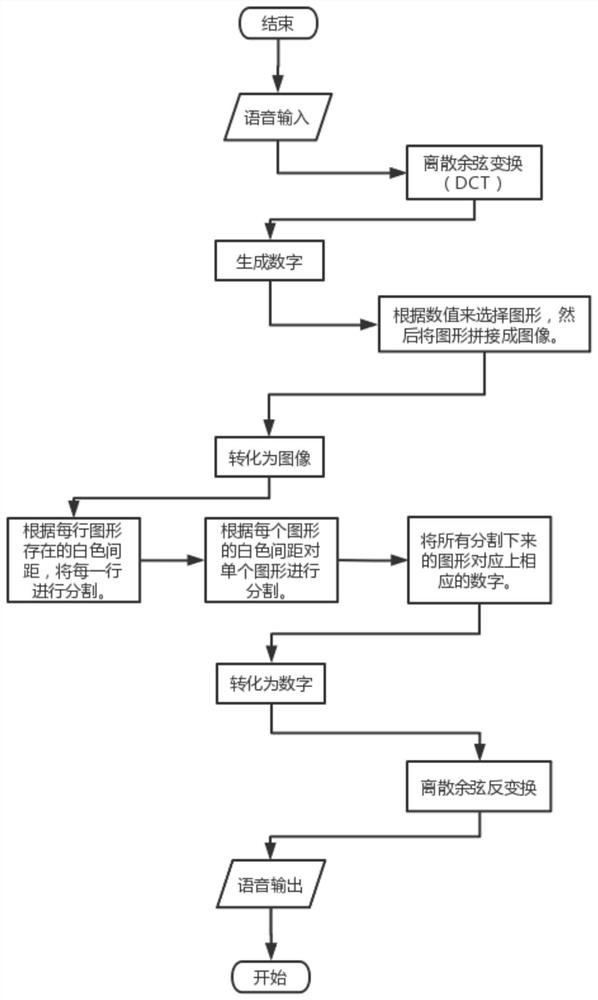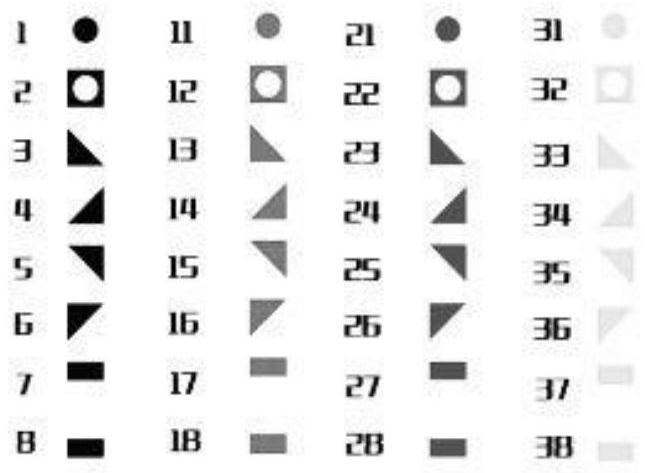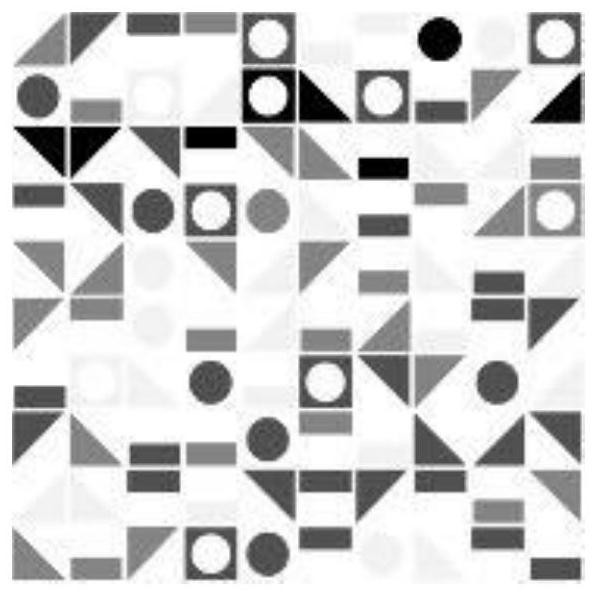Technical method for mutually converting image and voice
A technology of mutual conversion and voice, applied in the field of information exchange, it can solve the problems of poor security, single storage method of voice information and image information, and no intersection of information storage methods, so as to achieve the effect of protecting security and increasing interactive interest.
- Summary
- Abstract
- Description
- Claims
- Application Information
AI Technical Summary
Problems solved by technology
Method used
Image
Examples
Embodiment 1
[0035] Embodiment 1: The steps of the technical method of mutual transformation between the image and the voice are as follows:
[0036] Step 1: voice input;
[0037] Step 2: Carry out discrete cosine transform;
[0038] Step 3: generate numbers;
[0039] Step 4: Select graphics according to the value, and then stitch the graphics into an image;
[0040] Step 5: convert to image;
[0041] Step 6: Divide each row according to the white spacing of each row of graphics;
[0042] Step 7: Segment a single graphic according to the white spacing of each graphic;
[0043] Step 8: Correspond all the divided graphics to the corresponding numbers;
[0044] Step 9: Convert to numbers;
[0045] Step 10: Perform inverse discrete cosine transform;
[0046] Step 11: Voice output.
[0047] Wherein, in the step 1 and step 2, the collected voice information is first converted into a digital signal, and the voice is represented by a one-dimensional vector number (the sampling rate of the ...
Embodiment 2
[0049] Embodiment two: the steps of the discrete cosine transform method are as follows:
[0050] Step 1: First decompose the signal into DCT basis vectors, each number in the vector corresponds to its respective energy coefficient, and then sort according to the energy coefficient from large to small;
[0051] Step 2: According to the requirement of restoring the voice quality, select the percentage of the energy coefficient to represent the original voice data;
[0052] Step 3: After the final DCT digital signal compression, the original data becomes two vectors, one of which represents the compressed voice digital information, and the other vector represents the position information of each number, and these two sets of numbers are used to replace the original voice message.
[0053] In the step 4 and step 5, the method of converting numbers into images uses 32-bit characters to represent the original data. The images are composed of different shapes and different colors. ...
Embodiment 3
[0055] Embodiment three: first convert the image into a black and white (binary) image such as Figure 4 As shown, the part of the color image becomes a white image with a pixel value of 1, and the other white parts become a black area with a pixel value of 0, and then there are black areas with a pixel value of 0 according to each row of graphics and between each graphic features to segment the image.
[0056] The segmentation process is divided into two parts. In the first part, each row is segmented first. The segmentation process is as follows: Figure 5 As shown, first simulate a red straight line moving horizontally in the figure (the blue arrow is the moving direction), move the red straight line down from the top of the image in units of one pixel, and count the pixels occupied by the straight line during the moving process The sum of point values. When the value is not 0, it means that the red line is moving in the graphic area. When the value is 0, it means that the...
PUM
 Login to View More
Login to View More Abstract
Description
Claims
Application Information
 Login to View More
Login to View More - R&D
- Intellectual Property
- Life Sciences
- Materials
- Tech Scout
- Unparalleled Data Quality
- Higher Quality Content
- 60% Fewer Hallucinations
Browse by: Latest US Patents, China's latest patents, Technical Efficacy Thesaurus, Application Domain, Technology Topic, Popular Technical Reports.
© 2025 PatSnap. All rights reserved.Legal|Privacy policy|Modern Slavery Act Transparency Statement|Sitemap|About US| Contact US: help@patsnap.com



